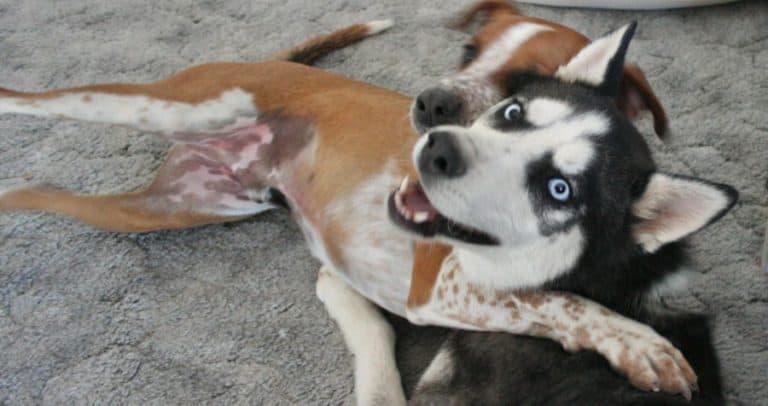The justifications for using food rewards, and why they mostly help the person. We’ll look at and discuss a popular dog trainer’s take on using food in training, while looking at when and how it may be effective.
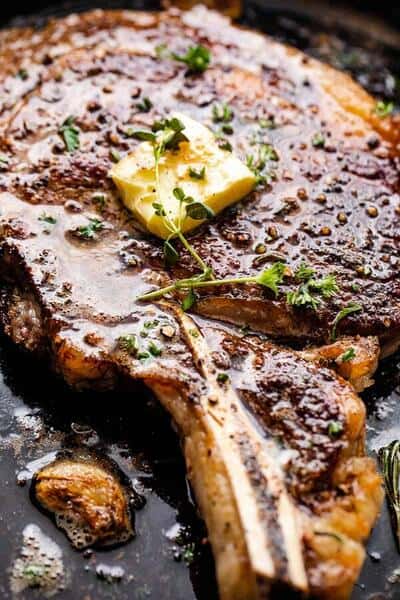
That’s Cheating
That’s the title of an article on Victoria Stilwell’s website, Positively.com. Where the article starts with a man accusing a dog trainer of bribing the dog with food while training.
Is it bribery?
If I were waving around a steak in order to encourage my dog to come back to me then, yes, you could argue that I was bribing or luring them to perform the desired behaviour. However, it’s hard to argue that something is a bribe if the dog is not aware of the potential reward until after they have performed the behaviour!
Gretta Ford
Well, that might be true if you had the dog do that particular behavior only once, and her training was then complete. But, if you did that several times (as you said), there’s a very good chance that she might remember. And, if not, then you may have a much bigger problem there.
Regardless, my main aim in recall training is to build a really strong reinforcement history because we know that if we follow up behaviour that we like with great consequences (like tasty food) for the dog, then we will strengthen this behaviour, making it more likely to occur again. Of course, we don’t want to end up with a “show me the money and I’ll think about it” response from our dogs so we do need to be mindful of how we use food in our training. For this reason, it’s important to fade out food lures pretty quickly if we are using them to train a specific behaviour, as I might for teaching a position such as ‘down’.
Let’s see here, first she talks about the great (food) consequences strengthening the behavior, then that it’s important to stop the food pretty quickly. That’s sort of hinting at what’s happening, while leaving out nearly all the important details. The part she’s hinting at is (or, should be) based on work from the great Behavioral Psychologist, B. F. Skinner, in his Schedules of Reinforcement. Dog trainers who actually understand that will give you the rules and criteria for when and how to reduce the food rewards, instead of just pretty quickly.
No pay, no work
I’m sorry to break it to you but dogs (just like other animals, including humans on the whole), simply do what “works”. This doesn’t mean that they don’t love you but there’s generally got to be something in it for them.
Just like people, eh? Well, I’ve often seen a group of people who got together just for companionship, play and doing things together. For that matter, I’ve also seen many dogs also doing that, with both other dogs, or with people.
Of course, for some dogs, praise from their owner is highly reinforcing and might be enough when your dog is being asked to perform a well-established, simple behaviour in an easy, low-distraction context. However, the reality is that if you have failed to train using reinforcers that your dog really cares about, they’re not likely to be too bothered about “pleasing you”, when they’re faced with the allure of other potential reinforcers (such as continuing to explore the environment or chasing a squirrel).
Let me just see if I have this down right! If you train your dog to come with only praise, he will likely ignore you if he sees another dog. However, if you’ve initially given him very tasty food rewards, then phased them out so he gets nothing, he will then ignore another dog and come back to you.
Apparently, this lady has little idea of what behavioral reinforcers actually are.
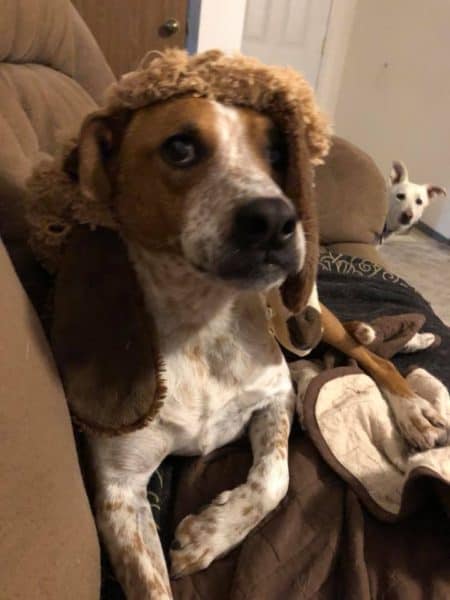
Unfortunately, her logic also conflicts with most texts and sites on dog training, as to how to take distractions into account while training. Instead, they will often tell you to start in your living room, then outside, progressing to the park, then with other animals around. And to take that, step by step.
Instead, Gretta is saying that the use of a food reinforcer eliminates the need for that. That if I use tasty food in teaching my dog to come on command, that he will simply ignore the rabbit running right past him. And that it will happen even if the food was already phased out and is no longer being given. Perhaps, this is stretching things more than a bit too far here?
Food is a unique reinforcer(?)
Alternative possible reinforcers could include petting (although most dogs don’t really enjoy being patted on the head, as the man had suggested), allowing them to sniff where another dog has been, chasing you, playing tug, allowing them to move ahead, catching a ball, searching for treats thrown in the grass, retrieving an item, being let off the lead, being allowed through a door or to access something, praise… and many, many more.
Now, this sounds like the Dog Must Work for Everything approach, where allowing them to even sniff something is a reserved reward. Not only is this not necessary, but some of it borders on abuse. And, since to be effective the dog must associate any reward with the behavior, repeated many times, some of her ideas are simply not practical.
As for the importance of allowing a dog to sniff, we need go no further than another article at the very same website. There you will find a long paragraph on the importance of allowing a dog to go sniffing.
If food doesn’t work, then try food
So, yes, you can use things other than food but please be aware that these things are all specific to the situation and to your dog – what one dog finds rewarding, another may find aversive and what your dog likes in one context may not be enjoyed in another!
I used to have a little fun, from watching allegedly expert dog trainers, trying to get to first base with a scared dog who would not take any kind of food. So many of them just had no idea of how to even get started, other than running off to grab more hot dogs to try.
So, Gretta is very correct in that different dogs will find different things rewarding. Except, her “other than food” indicates she simply has no concept that food can be one of those items that may not be enjoyed.
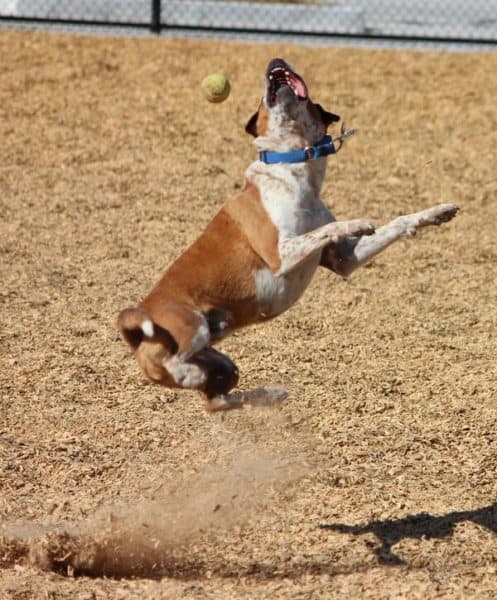
Let’s just outline all the factors…
I think more often than not, people’s objections to using food rewards in training come from a lack of understanding of what exactly is going on, something which is brilliantly illustrated by this image from @behavior vets. As you can see, it’s far from “cheating”!

As we’ve already discussed, I surely agree on her own lack of understanding comment. However, most of those items in the image simply do not apply. Take the science on behavior reinforcement. While that can be done with food, most of what a dog will learn in their life through reinforcement will have nothing to do with food. Nor does the science ever require it.
Nor do treats have anything directly to do with managing space, nor does a carefully thought out training plan require food treats, or vice versa. As for a dog being free to express themselves without fear of punishment, just go back to where Gretta limited the dog’s ability to sniff things unless she first got the behavior she wanted. To do that, you will have to remove or restrict that sniffing behavior that the dog naturally seeks until you get what you want. And that is the very definition of operant punishment.
Why and when to use food in Dog Training
First, this only applies to those dogs who will work for food rewards.
Over the years, I’ve gone from using food treats in training, to almost none. Now, I only use food treats in teaching the dog how to take treats gently, and react to both dropped treats, and to another dog taking one right next to him. Obviously, these are all items where you really must have some food treats available in order to teach them.
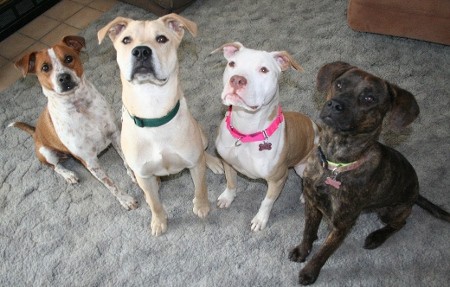
Why did I mostly stop using food treats? Because I had many dogs to quickly train, and found it was much faster without using treats. If you look above to where they speak about phasing out treats on each behavior, that’s a period of time which is simply wasted and can be saved.
The reasons for this come back to two specific items, only one of which was mentioned above. The first is reinforcement of the behavior. For training behaviors which the dog will inherently enjoy, his jumping in the air to catch the frisbee is enough reward for him to follow the rules while you keep repeating this.
In many other cases, your praise and companionship will often be enough reinforcement, provided the next two items are satisfied.
The food as a marker
For other than very fearful dogs, perhaps the single, biggest training issue is in effective communication. Some people are far better, or much worse, than others. But, many people are simply not very good at this, especially when new to dogs or a particular dog. The person focusing on the treat as a reward may reduce the confusion they otherwise spread, and giving the treat immediately after the desired behavior is a clear marker for what you are approving.
From that, the food reward plays two roles. One in reinforcement, and the other in communication. And to use food effectively, you must realize that both roles have to be satisfied. I’ve even seen people mess up the timing and presentation on the food rewards, then wonder why the dog simply isn’t learning.
With just a very little thought, it becomes very obvious that it depends on how the reward is given. But, why is it that none of those expert dog trainers ever mention that?
And, if you were able to effectively and accurately communicate this without ever using any food to mark approval, you might not even need it.
The dog’s interest
One of the common items they really never mentioned is the dog’s interests. If a dog really hates running out and catching a frisbee, sure you can somewhat train some of them to do that with rewards. But, why on earth would you want to do that? Other than obedience training for control and safety, why would you want to force your dog to do something he doesn’t even like?
If the interest is there (or if he learns to like it), then only effective communication is really needing in training. And the behavior itself will then become self- or auto-reinforcing. And, that is how I’ve been doing most dog training.
And, if he’s really interested in it, then you get great results, with no food at all.
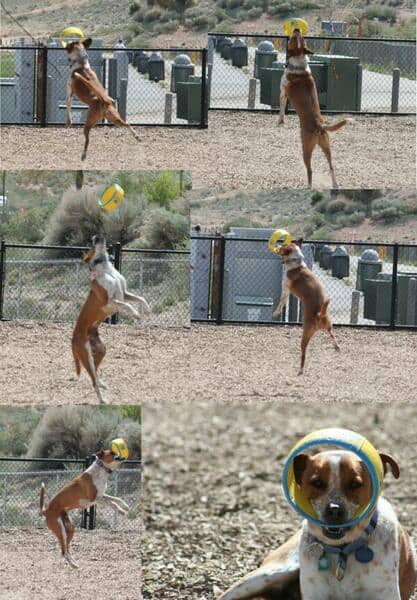
Taking that a step further, after some very basic, initial training, where I go next is often determined by the dog’s responses. We may briefly try a dozen items, then pick the few that really attract her. And the more they learn, the easier it is to learn other behaviors.
